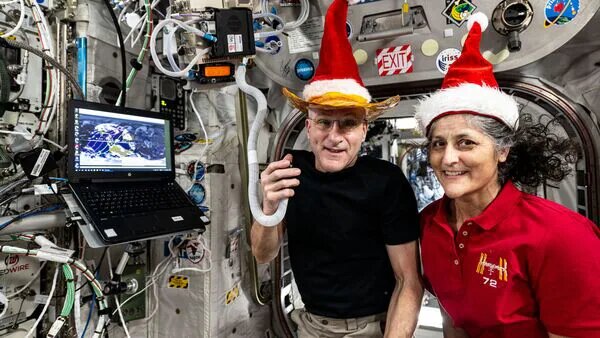What began as a routine eight-day mission turned into an unprecedented orbital marathon for astronauts Butch Wilmore and Suni Williams. Originally scheduled for a brief stay aboard the International Space Station (ISS), technical failures in Boeing's Starliner spacecraft extended their mission to an extraordinary 286 days—during which they traveled 121 million miles and completed 4,576 orbits around Earth. Yet despite this remarkable ordeal, a surprising detail has emerged: NASA compensated them just $5 per day for their extended time in space.
Mission Gone Awry
The journey began on June 5, 2024, when Wilmore, a veteran Navy pilot, and Williams, renowned for her spacewalking achievements, launched from Cape Canaveral aboard Boeing's Starliner. The spacecraft successfully docked with the ISS on June 6, with all initial systems appearing functional. However, problems quickly emerged. Five thrusters malfunctioned during the docking procedure, and subsequent helium leaks compromised the spacecraft's integrity. As NASA and Boeing engineers struggled to develop solutions, the astronauts' planned eight-day mission stretched into weeks, then months.
Adapting to Uncertainty
By August, NASA officials reached a difficult conclusion: the Starliner was no longer considered safe for a crewed return journey. On September 6, 2024, the spacecraft was sent back to Earth without passengers, landing in New Mexico. Wilmore and Williams officially joined the ISS crew, conducting scientific experiments, performing spacecraft maintenance, and participating in spacewalks—with Williams adding to her already impressive spacewalking record. Throughout their extended mission, they demonstrated remarkable resilience while awaiting a solution to their predicament.
Compensation Controversy
Perhaps the most surprising aspect of this saga came to light after their return: according to The New York Times (March 20, 2025), NASA paid the astronauts a mere $5 daily stipend for "incidentals" during their unplanned 278-day extension—totaling approximately $1,430 each. This standard per diem followed NASA regulations but included no additional compensation for overtime or hazard pay despite the extraordinary circumstances. When President Trump learned of this situation on March 21, he expressed outrage, stating to Fox Business: "Nobody told me this—I'll pay it myself if I have to!" The revelation has sparked public debate about appropriate compensation for astronauts facing unexpected mission extensions.
SpaceX Rescue
With Boeing's Starliner no longer an option, SpaceX provided the solution. The company's Crew-9 mission, which launched in September 2024 carrying astronauts Nick Hague and Aleksandr Gorbunov, included contingency plans for Wilmore and Williams. After Crew-10 arrived at the station on March 16, 2025, with astronauts Anne McClain, Nichole Ayers, Takuya Onishi, and Kirill Peskov, the stage was set for the stranded astronauts' return. On March 18, Wilmore, Williams, Hague, and Gorbunov boarded the Dragon Freedom capsule and splashed down safely near Tallahassee at 5:57 p.m. EDT. In a poetic coincidence, dolphins were spotted swimming near the recovery ship as the astronauts returned from their unexpected journey.
Boeing Under Scrutiny
The Starliner's technical failures have placed Boeing under intense scrutiny. NASA has scheduled a mid-2025 test flight to evaluate potential solutions, but confidence in the spacecraft has been severely impacted. The controversy surrounding the astronauts' meager compensation, amplified by President Trump's intervention, has further complicated Boeing's public relations challenges. Meanwhile, SpaceX's successful rescue operation has highlighted the contrast between the two aerospace companies' capabilities.
Triumphant Return
Despite their ordeal, Wilmore and Williams returned to Earth in good spirits. Williams received a warm welcome message from Indian Prime Minister Modi, who tweeted, "Earth missed you"—acknowledging her celebration in Jhulasan, Gujarat. Wilmore expressed gratitude to the teams that made their safe return possible. Their 286-day mission—involving 4,576 orbits and overcoming significant technical challenges—stands as a testament to human endurance and adaptability in the face of unprecedented circumstances.
A Lesson in Resilience
Beyond the technical failures and compensation controversies, the story of Wilmore and Williams demonstrates extraordinary human resilience. Facing prolonged exposure to microgravity, increased radiation, and the psychological challenges of an indefinite mission extension, they maintained professionalism and focus throughout. Their experience serves as a powerful reminder of humanity's capacity to overcome obstacles even in the most extreme environments—proving once again that the human spirit remains our most valuable asset in space exploration.
